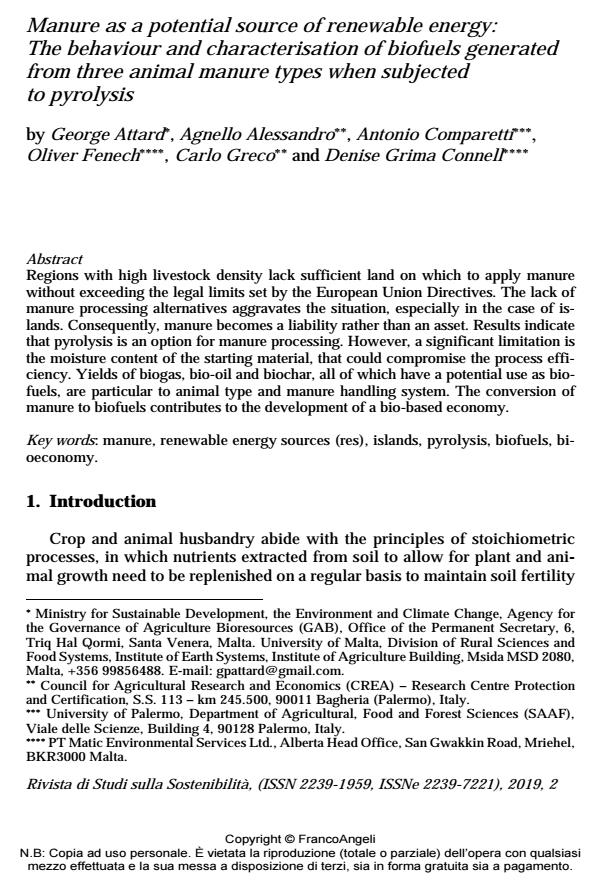Manure as a potential source of renewable energy: The behaviour and characterisation of biofuels generated from three animal manure types when subjected to pyrolysis
Titolo Rivista RIVISTA DI STUDI SULLA SOSTENIBILITA'
Autori/Curatori George Attard, Agnello Alessandro, Antonio Comparetti, Oliver Fenech, Carlo Greco, Denise Grima Connell
Anno di pubblicazione 2020 Fascicolo 2019/2 Suppl.
Lingua Inglese Numero pagine 14 P. 331-344 Dimensione file 130 KB
DOI 10.3280/RISS2019-002-S1021
Il DOI è il codice a barre della proprietà intellettuale: per saperne di più
clicca qui
Qui sotto puoi vedere in anteprima la prima pagina di questo articolo.
Se questo articolo ti interessa, lo puoi acquistare (e scaricare in formato pdf) seguendo le facili indicazioni per acquistare il download credit. Acquista Download Credits per scaricare questo Articolo in formato PDF

FrancoAngeli è membro della Publishers International Linking Association, Inc (PILA)associazione indipendente e non profit per facilitare (attraverso i servizi tecnologici implementati da CrossRef.org) l’accesso degli studiosi ai contenuti digitali nelle pubblicazioni professionali e scientifiche
Regions with high livestock density lack sufficient land on which to apply manure without exceeding the legal limits set by the European Union Directives. The lack of manure processing alternatives aggravates the situation, especially in the case of islands. Consequently, manure becomes a liability rather than an asset. Results indicate that pyrolysis is an option for manure processing. However, a significant limitation is the moisture content of the starting material, that could compromise the process efficiency. Yields of biogas, bio-oil and biochar, all of which have a potential use as biofuels, are particular to animal type and manure handling system. The conversion of manure to biofuels contributes to the development of a bio-based economy.
Parole chiave:Manure, renewable energy sources (res), islands, pyrolysis, biofuels, bioeconomy.
George Attard, Agnello Alessandro, Antonio Comparetti, Oliver Fenech, Carlo Greco, Denise Grima Connell, Manure as a potential source of renewable energy: The behaviour and characterisation of biofuels generated from three animal manure types when subjected to pyrolysis in "RIVISTA DI STUDI SULLA SOSTENIBILITA'" 2 Suppl./2019, pp 331-344, DOI: 10.3280/RISS2019-002-S1021